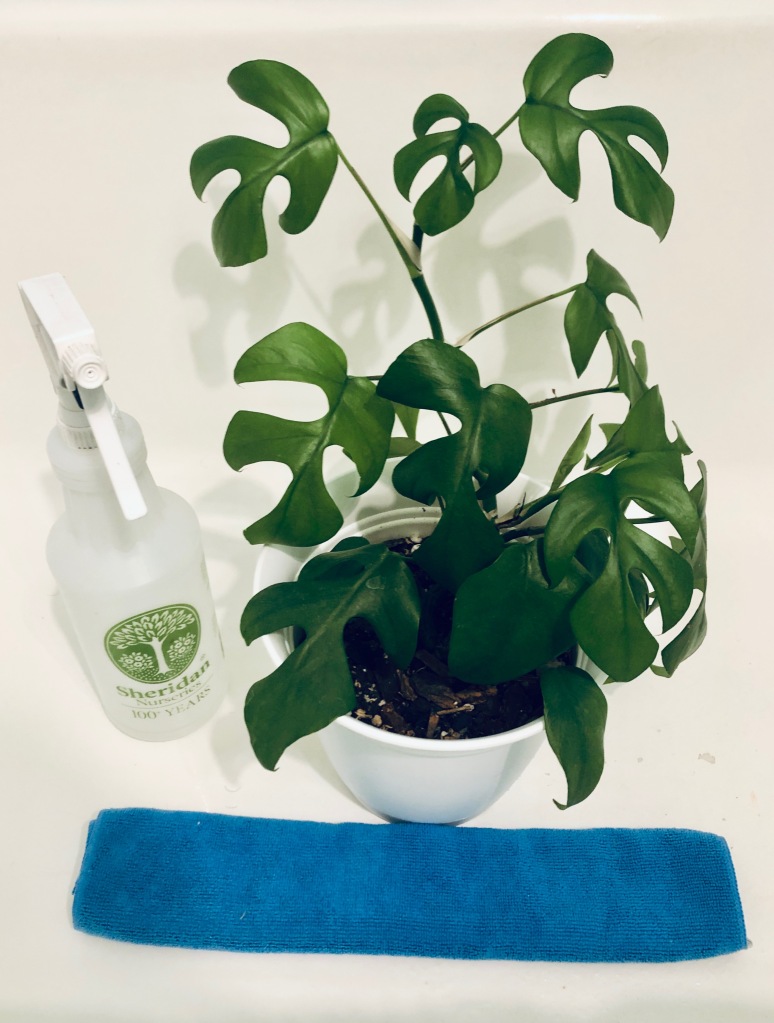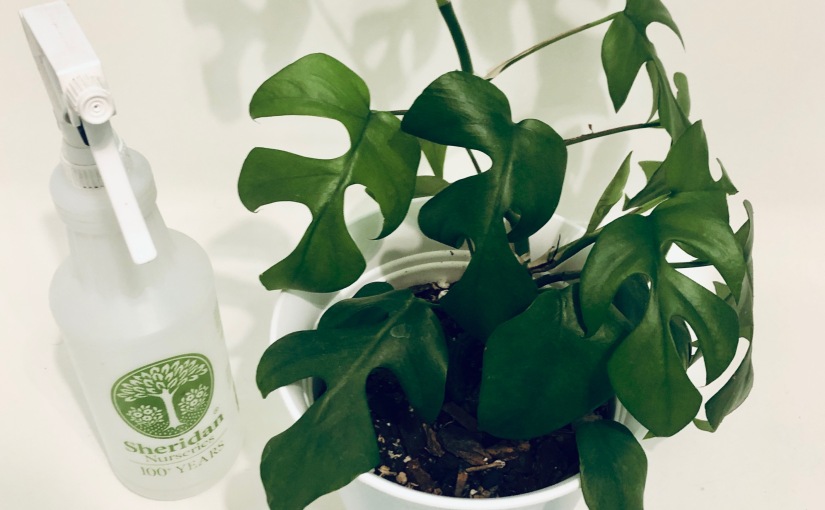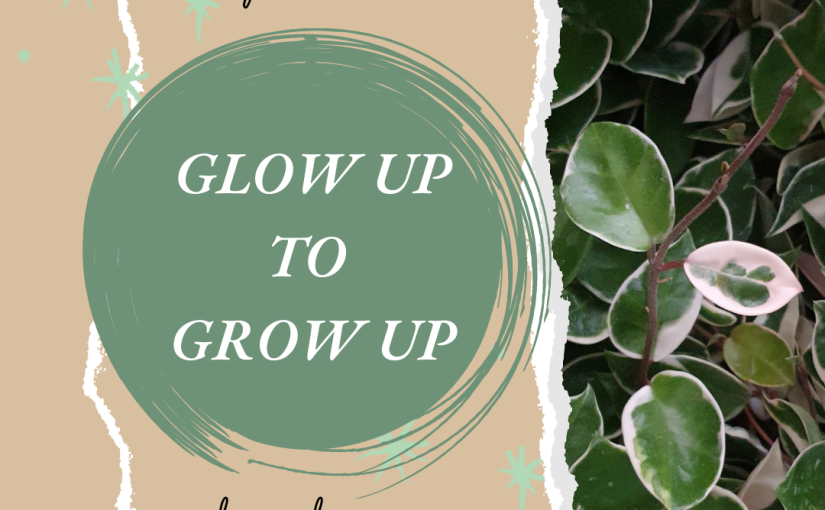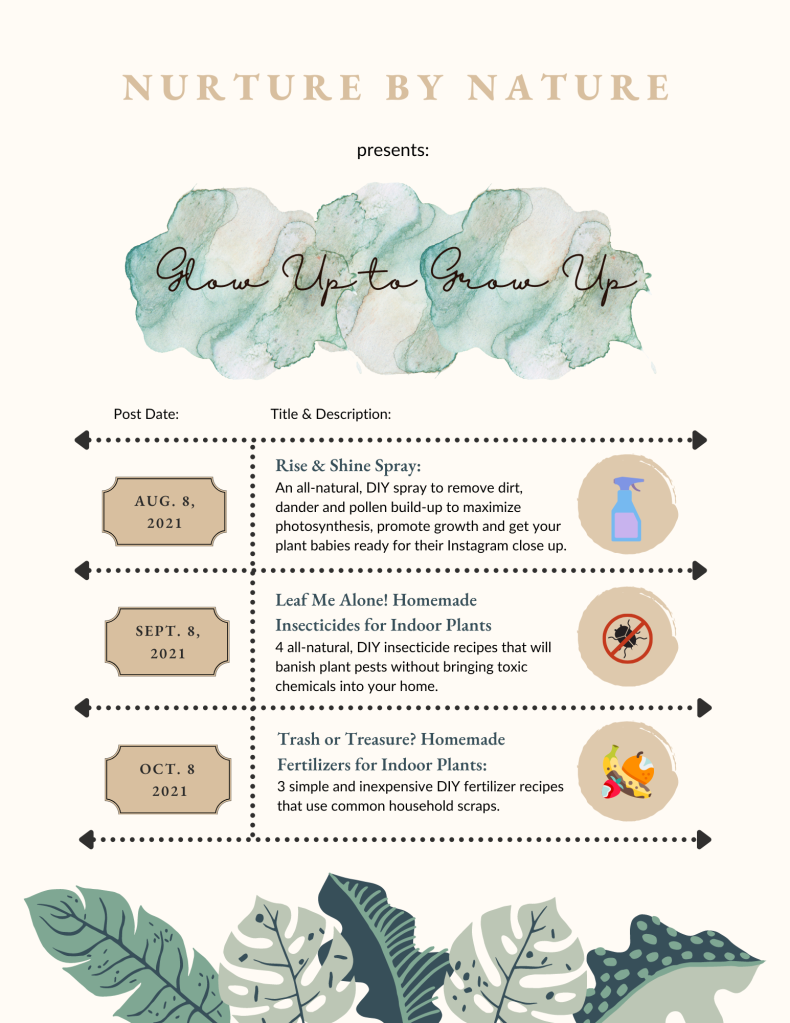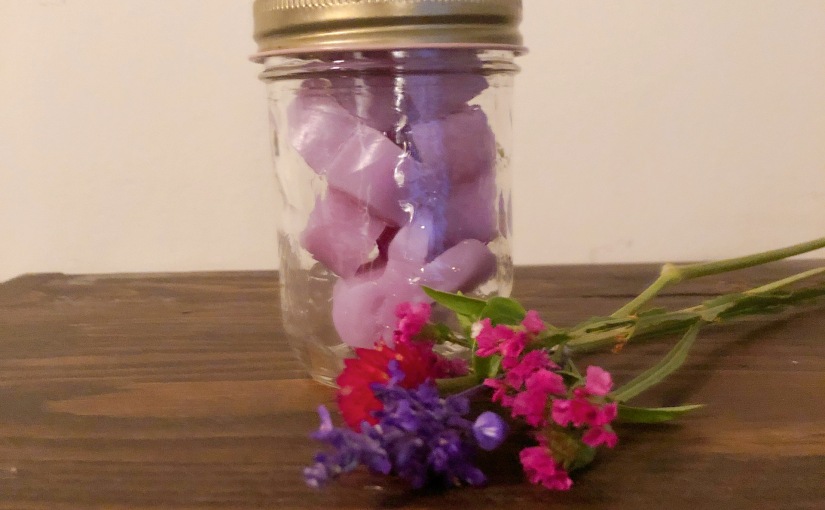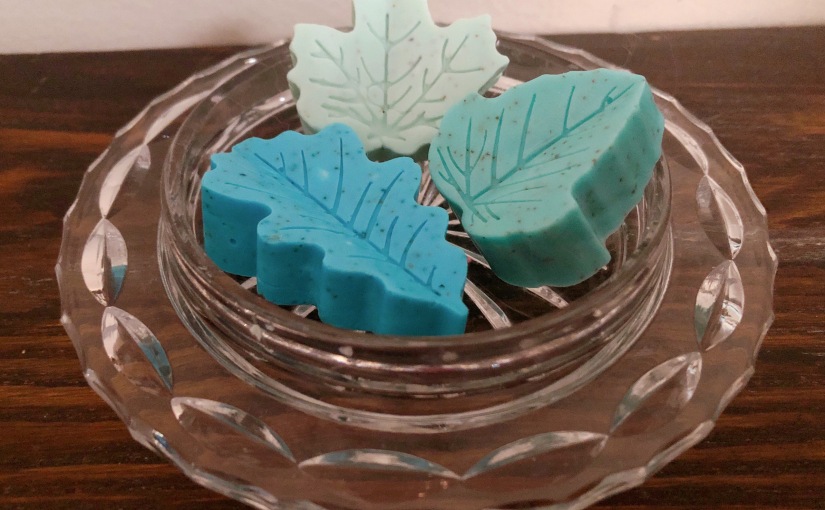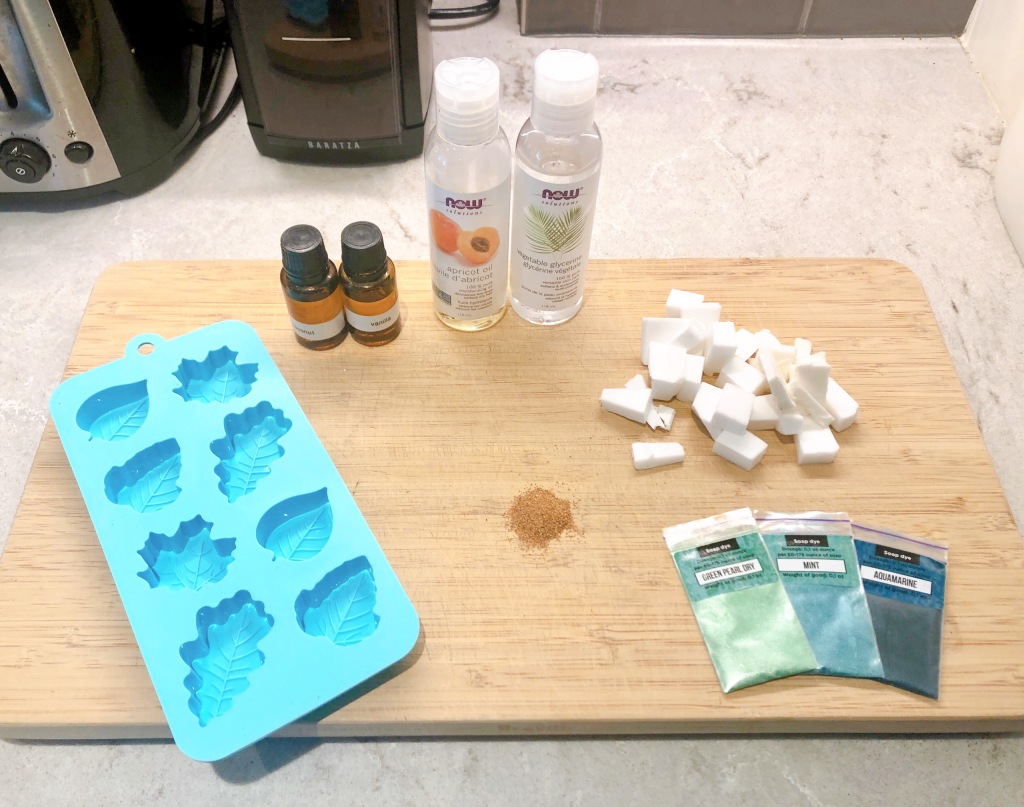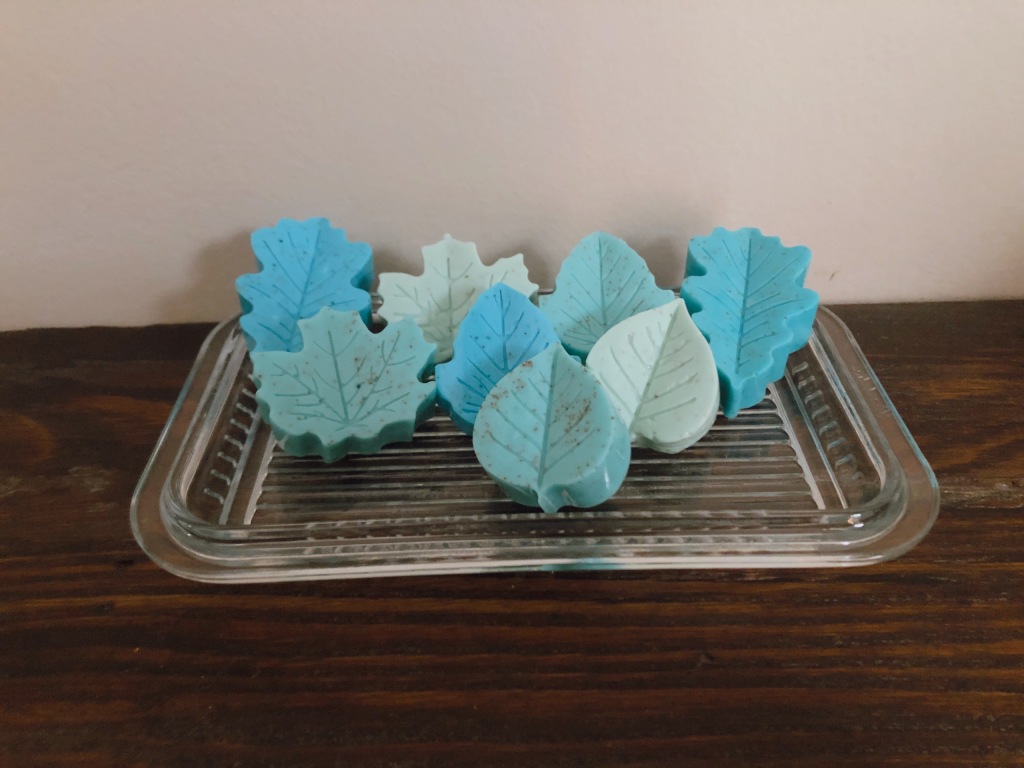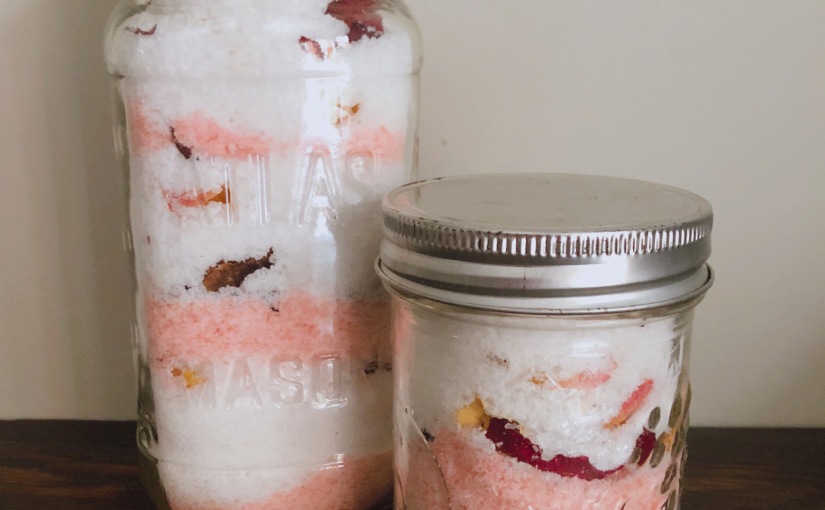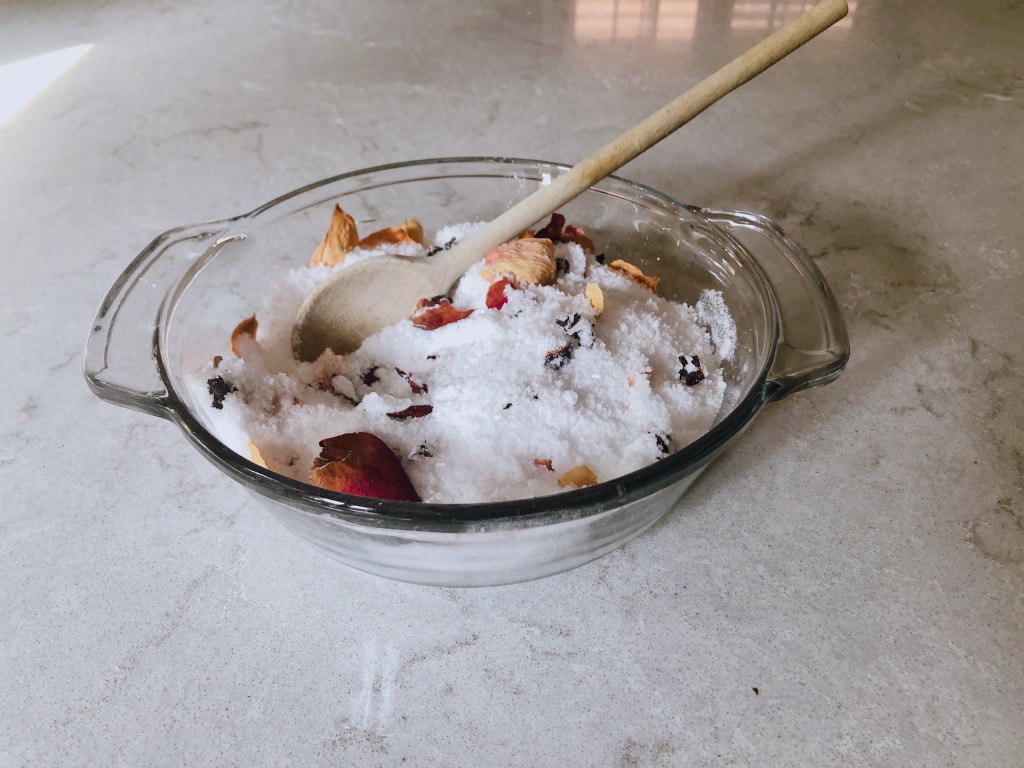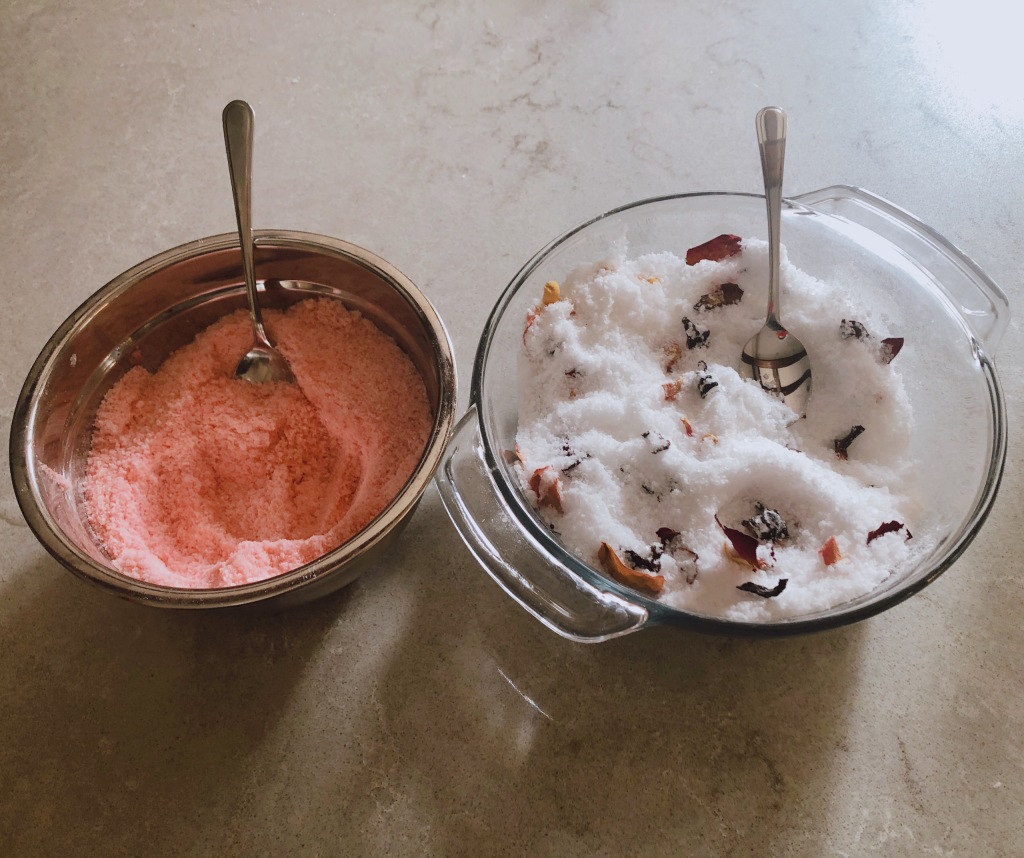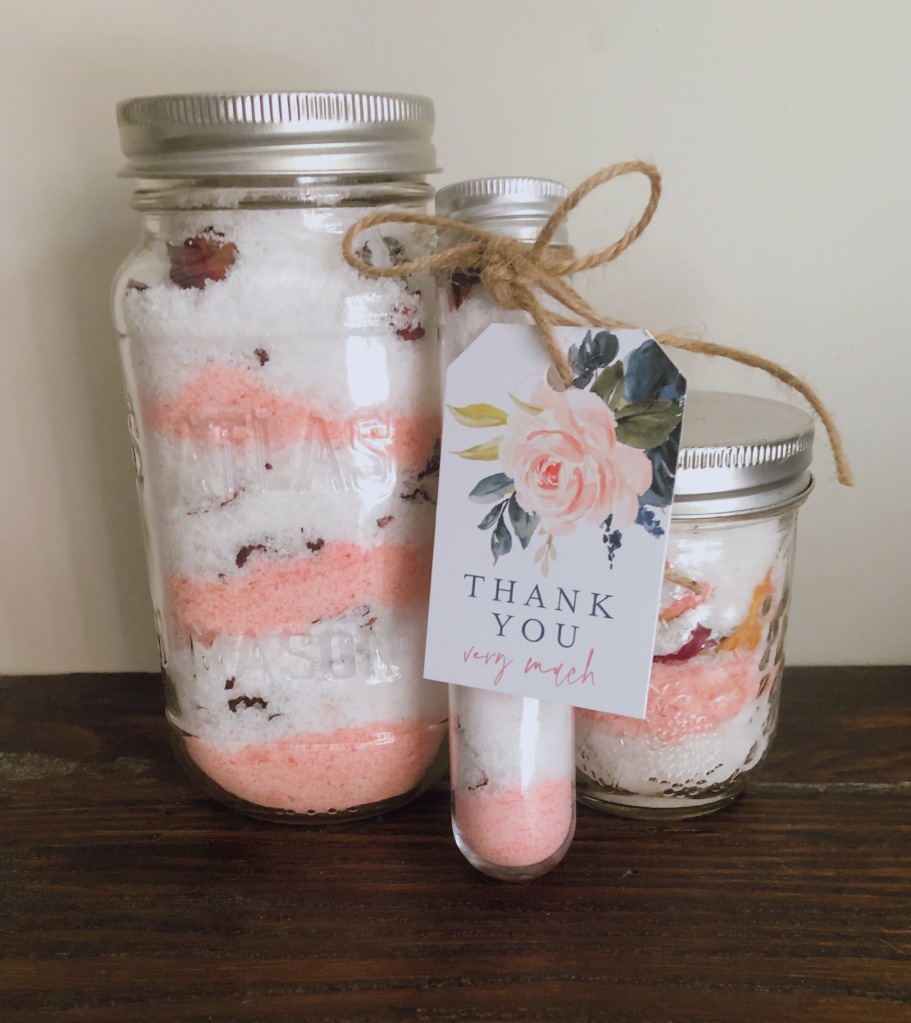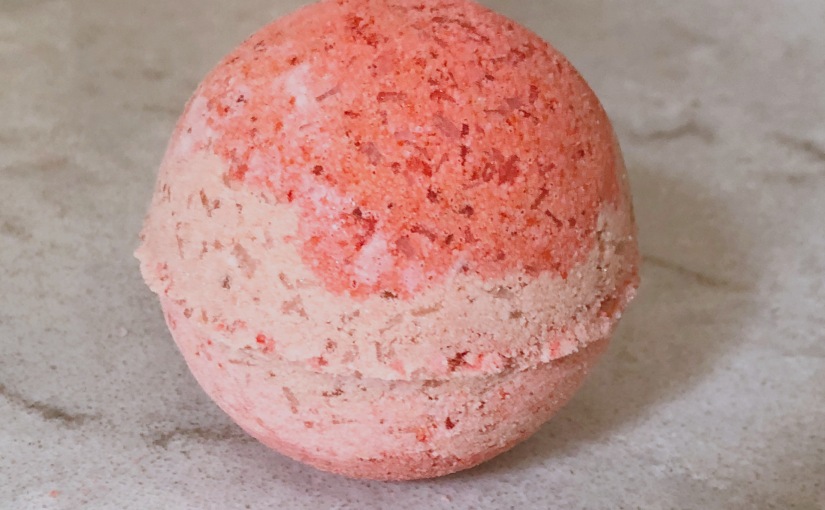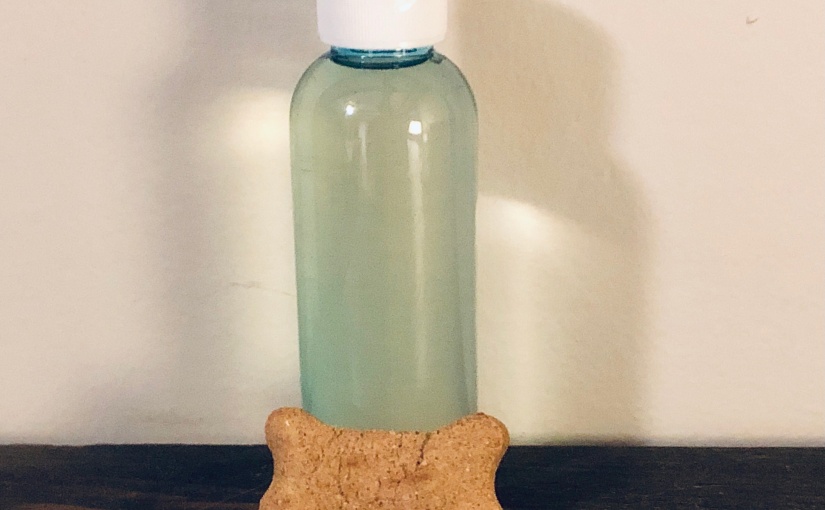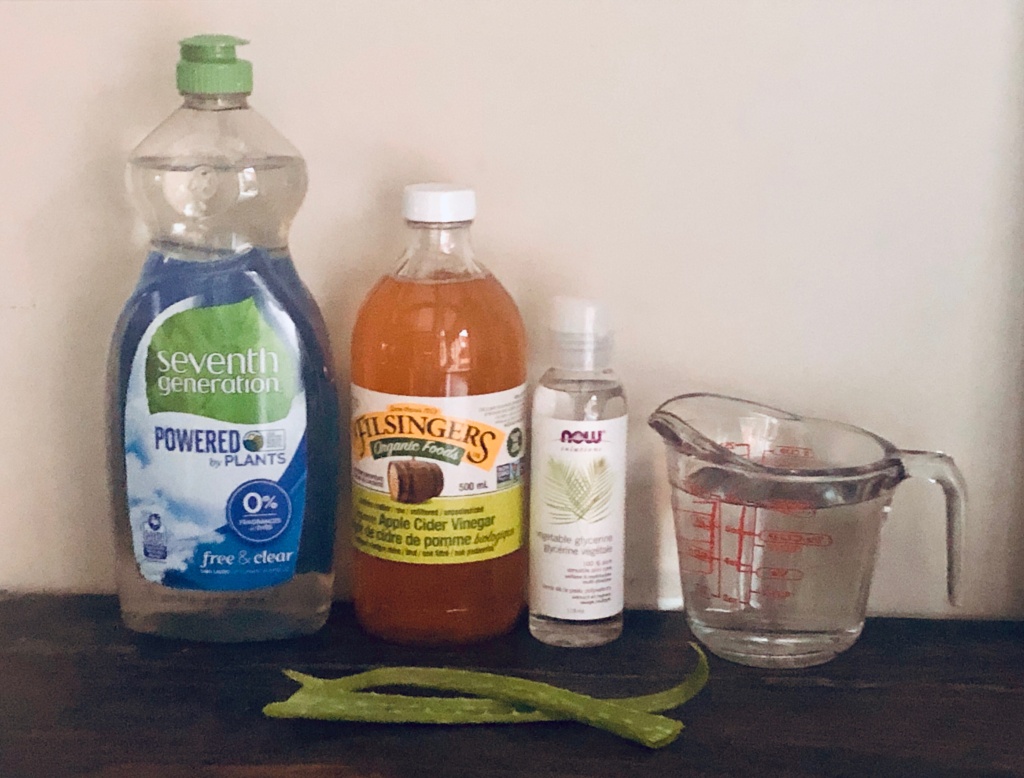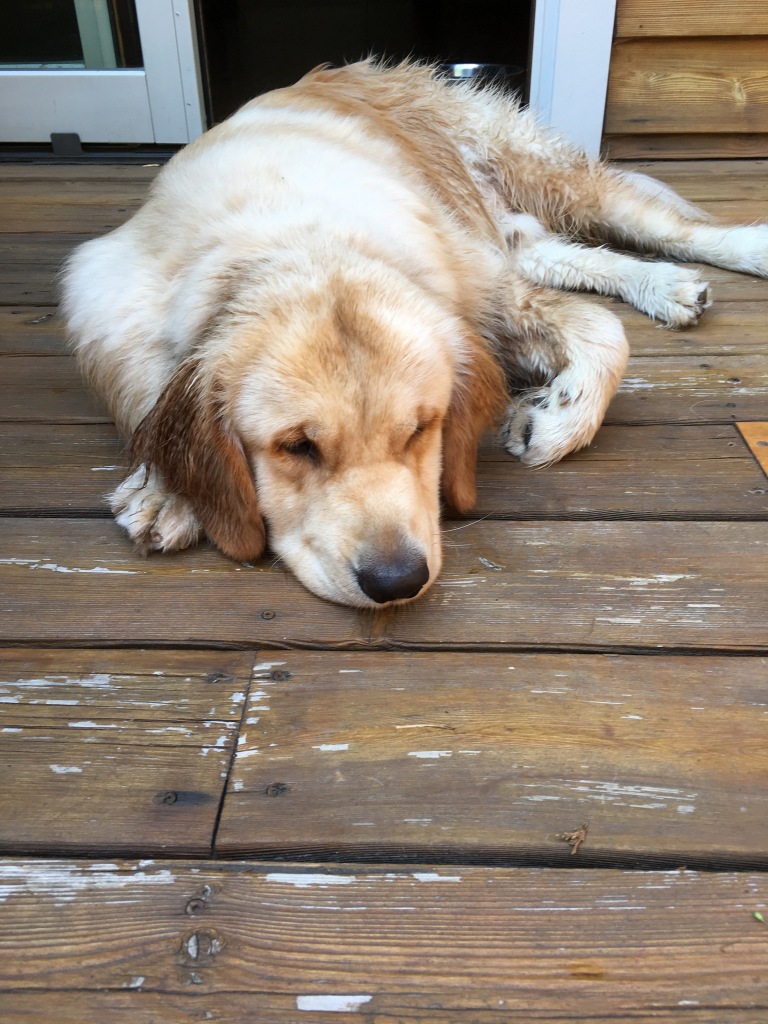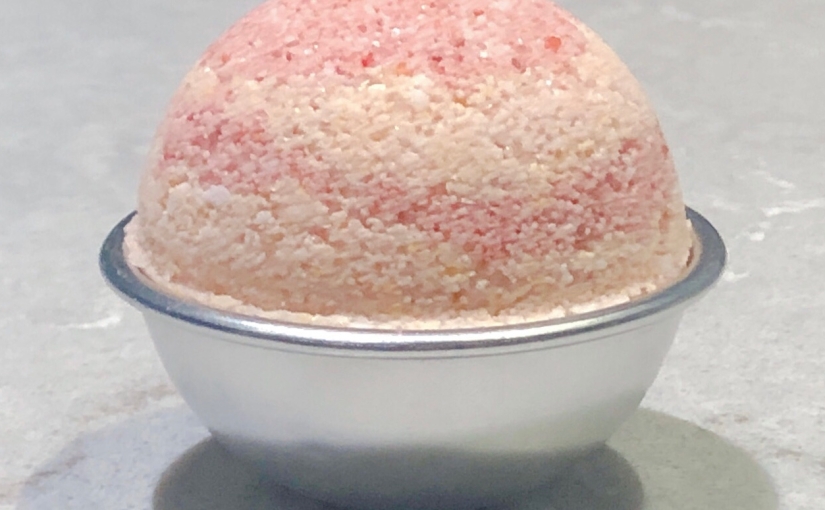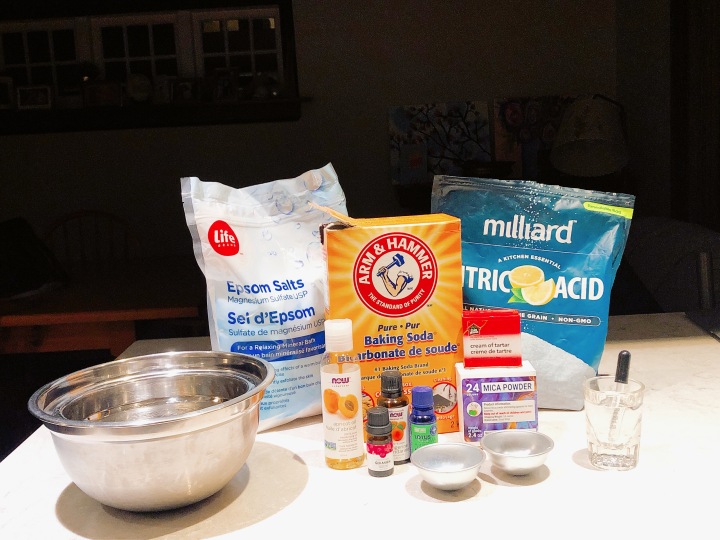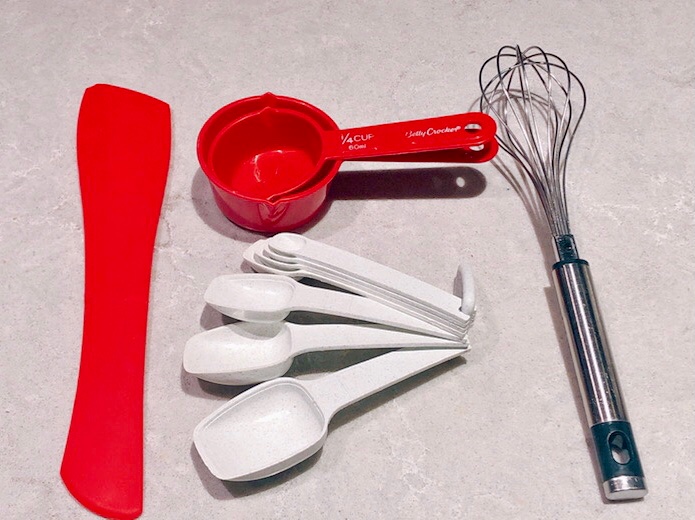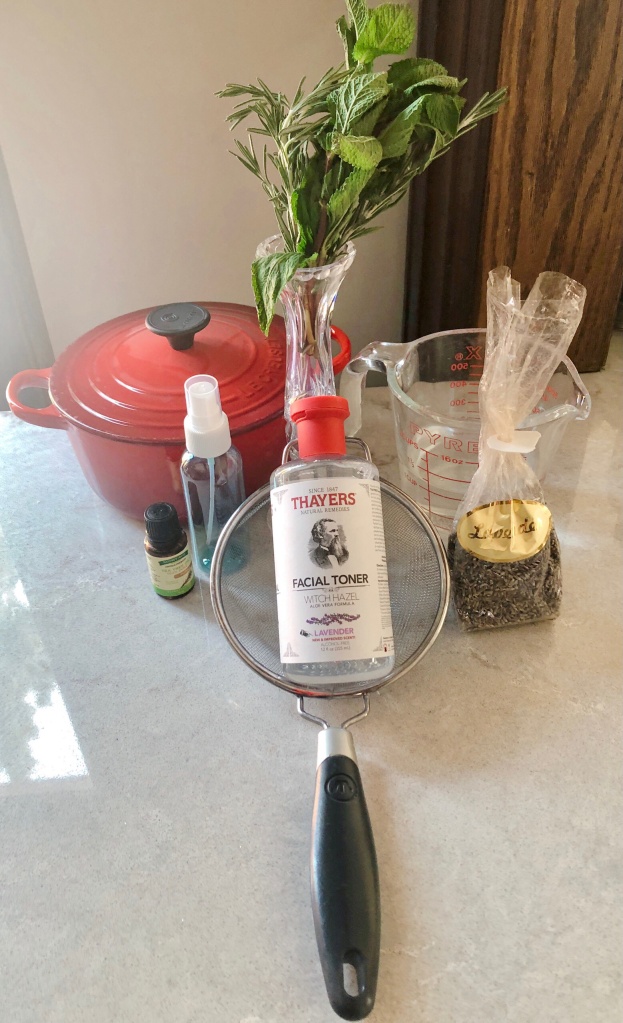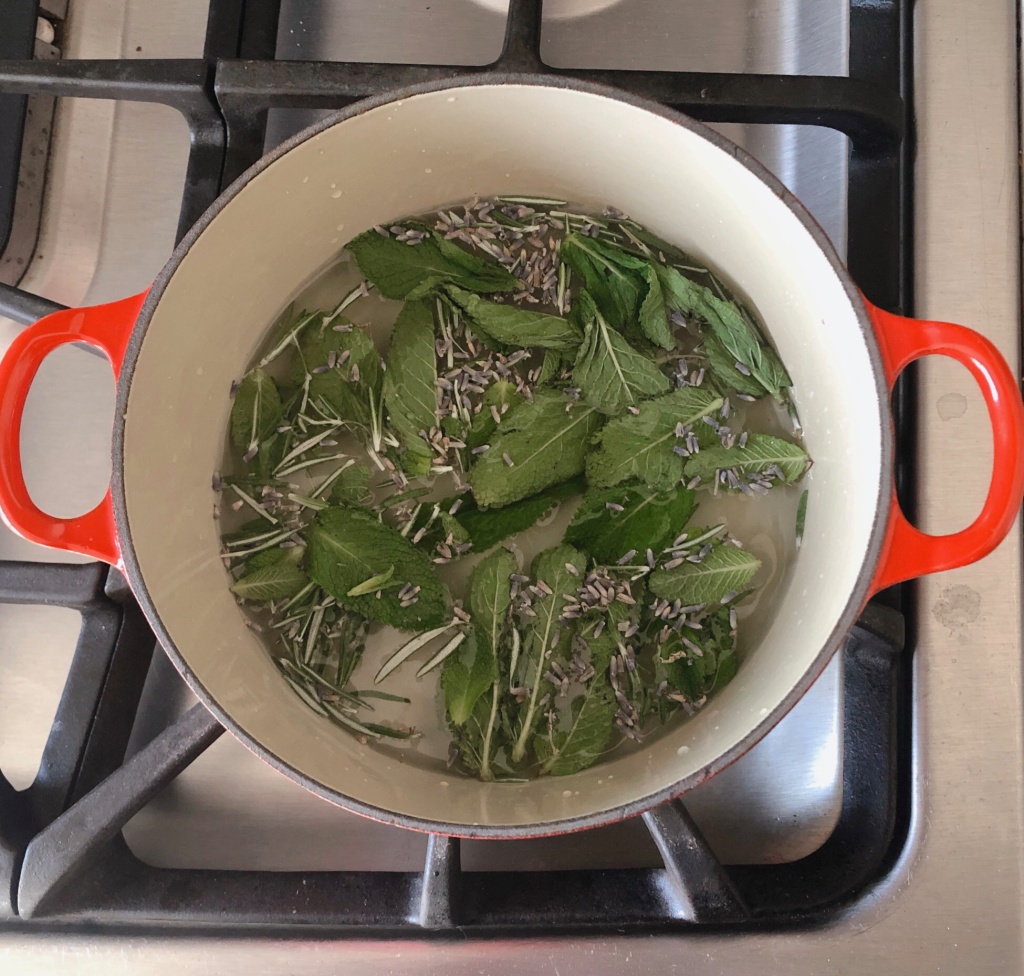In my post for my Glow Up to Grow Up series, I will be sharing a recipe for DIY natural leaf shine.
What’s leaf shine, you ask?
Have you ever brought a new plant home from the store and noticed how shiny its leaves are? If so, it’s likely because the plant was treated with a leaf shine product before you purchased it.
As a former florist, I know that there are numerous commercial leaf shine products on the market. Leaf shine does what its name suggests, and many retailers use it to make their products appear more desirable to consumers. Indeed, commercial leaf shine products are purely cosmetic, and in fact, many store-bought varieties can be detrimental to plant health.
In addition to harsh chemicals, many commercial leaf shine products contain oil or wax. While these ingredients give leaves an impossibly glossy, perfectly lustrous finish, they can also deposit onto the plant and cause buildup. This is harmful because plants breathe through tiny pores on their leaves called stomata, which are easily clogged. While clogged pores might result in an unsightly blemish for humans, they can result in suffocation or death for our green, leafy housemates.
The natural accumulation of dust, dirt, and dander can block your plant from absorbing light, thereby affecting photosynthesis and your plant’s ability to grow. For this reason, cleaning the leaves of your plant is an essential part of maintaining good plant health. While it is by no means necessary to use a leaf shine product, I recommend making your own so that you can control the ingredients.
The following recipe will not give your plant the high shine look, which is incredibly artificial. Remember that your plant is a living, breathing organism and that leaf shine – natural or otherwise – is no substitute for regularly cleaning your plant’s leaves.
The process of polishing your plant leaves begins with cleaning. Here are two methods that I like to use.
- Sponge or Cloth: Remove any excess dirt and debris with a damp sponge or cloth. Make sure to support each leaf with one hand, gently wiping down the leaf and away from the stem with your other hand. Don’t forget the leaves’ underside, which is a common hiding spot for houseplant pests. You can also use a soft brush for leaves that are especially small or delicate (I like to use an old paintbrush or eyeshadow brush).
- Shower: Another method that is particularly useful for larger plants, or ones with leaves that are difficult to wipe, is showering. I live in an apartment, so I generally water my plants in the shower anyways, and it is a fantastic way to give your green friends some extra TLC. It is important to use lukewarm water because plants don’t like their water as warm as we do, and cold water will shock their system. Be sure to gently run your hands through the foliage and hold the plant at various angles to make sure that the water hits the undersides of the leaves too.
If you’re still lusting after that glossy look, now you can gather your ingredients and supplies for my DIY Rise & Shine Spray.
How to Make DIY Rise & Shine Spray
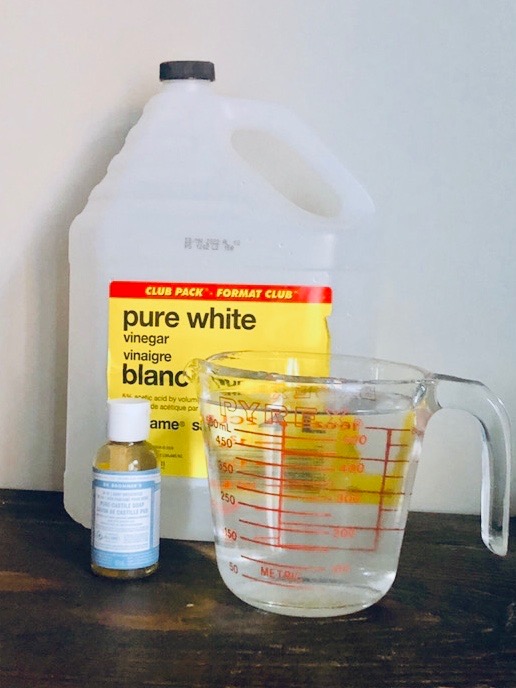
Ingredients:
- 2 cups water
- 1/2 teaspoon white vinegar
- 2 drops Castille/dish soap (I love Dr. Bronner’s).
Supplies:
- Empty spray bottle
- Microfibre cloth or paper towel
Preparation:
- Put all ingredients into empty spray bottle and replace the nozzle.
- Shake thoroughly to combine.
After mixing the ingredients, you can either apply it to the leaves with a spray bottle or simply dip a cloth into the mixture. I recommend using a soft, microfibre cloth to protect leaves from damage. Another option, if you are concerned about spreading pests between plants, is to use a disposable paper towel for each plant. When you are using the product, be sure to support each leaf with one hand while gently wiping down the leaf and away from the stem with your other hand.
*Important note: This spray is safe for use on certain types of leaves only. I do not advise using it on delicate foliage, including plants with fuzzy-textured leaves, succulents, and air plants, among others. If you are unsure whether to use leaf shine or want more information, Larry Hodgson of Laidback Gardener wrote an excellent blog post in 2018 called “Do You Really Need Leaf Shine Products?”.
While leaf shininess is not an indicator of plant health, keeping your leaves free of dust can aid in photosynthesis and promote growth. Shine on, plant pals!
